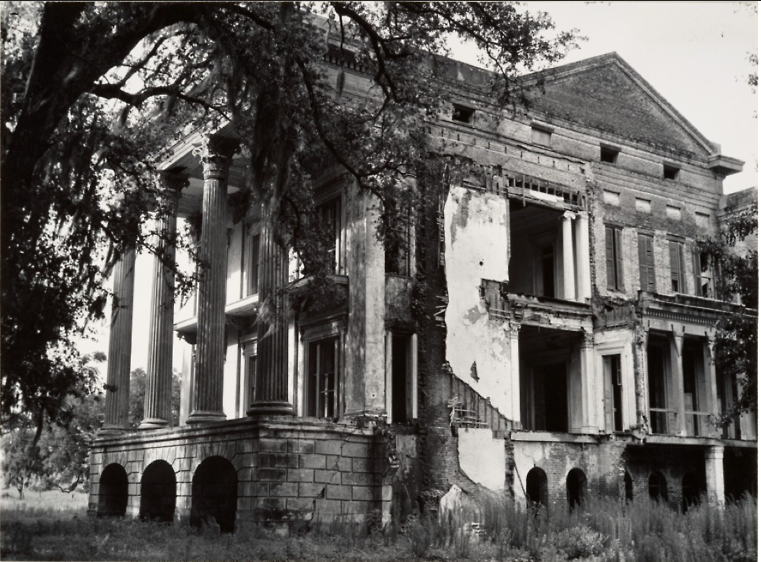The Sunday Sermonette: Grandeur to Ruin and Back Again.

When I was a teenager in the 1960s, Mom, Dad, and I often paid weekly visits to the Harrison County Library on Hwy 90 in Gulfport. I enjoyed walking up its modernist spiral staircase, grabbing a book from the many shelves on art and architecture, then planting myself in a comfortable chair to read and enjoy the magnificent view of the Gulf of Mexico—the late afternoon sunlight like sparkling diamonds thrown across the water.
During one of those visits, I discovered a book that I love to read and re-read to this day. That book was Clarence John Laughlin’s “Ghosts along the Mississippi.” The book was first published in 1948 and chronicled the grand plantation houses that hugged the River Road between Baton Rouge and New Orleans. Some are still existent, but most are long gone, vestiges of grandeur that collapsed into ruin. One such mansion was Belle Grove.
Designed by Henry Howard and built by John Andrews in 1857, Belle Grove was the largest plantation house in the Mississippi Valley. Through the years, its seventy-five rooms–resplendent with elegant columns and magnificent plasterwork–were filled with gilded furniture, oil paintings, hand-woven tapestries, and plush rugs imported from Europe. The estimated value of the house’s contents was $350.000, over twelve million in today’s money.
After the Civil War, Belle Grove held on to its pre-war grandeur, waltzed through the last years of the 19th Century, and hailed the beginning of the 20th Century with a glass of bubbly champagne. However, good fortune’s bright lights unknowingly burned against an approaching darkness.
That darkness was a succession of sugarcane crop failures. Then, the sugar market was invaded by foreign sugar, and by 1924, the family’s money had evaporated, along with a way of life that had outlived its time. Belle Grove was abandoned. Its grandeur gone. Its ruin inevitable. Its decaying shell finally burned in 1952, and only its soaring Corinthian columns and collapsed brick walls remained.
John Andrews’ extravagant dream mansion is but a memory, living on only in sepia-toned photographs. But another mansion is promised in the Bible, one that will not decay. One that will live on in grandeur and never left to ruin. Jesus tells us, “Lay not up for yourselves treasures upon earth, where moth and rust doth corrupt, and where thieves break through and steal. But lay up for yourselves treasures in heaven, where neither moth nor rust doth corrupt, and where thieves do not break through nor steal. For where your treasure is, there will your heart be also.”
During the oncoming Christmas Holidays, with its addictive, corruptible commercialism, we purchase “treasures” that lose their importance once their newness wears off. We spend money on “grandeur,” forgetting that earthly things can corrupt it, rust can destroy it, and thieves can steal it.
In the oncoming rush, don’t forget Jesus’ words: “In my Father’s house are many mansions: if it were not so, I would have told you. I go to prepare a place for you.” Unlike Belle Grove, that mansion is eternal and is just over the hilltop, as the old song says:
“Tho’ often tempted, tormented, and tested. And, like the prophet, my pillow a stone. And tho’ I find here no permanent dwelling, I know He’ll give me a mansion of my own.
I’ve got a mansion just over the hilltop. In that bright land where we’ll never grow old; And someday yonder we will never more wander but walk the streets that are purest gold.”
Ponder this and go forth.




